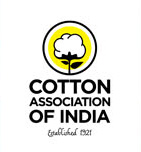CCI & NAFED blamed for creating artificial cotton shortage
By Our Special Correspondent MUMBAI, MAR. 08
A vibrant atmosphere prevails at the headquarters of Cotton Textiles Export Promotion Council (TEXPROCIL) in the city. Export plans are on anvil to grow @ 20% during 2013-2014 by the charged-up Texprocil Team led Mr. Manikam Ramaswami, Chairman of the Council.
The efforts of cotton textile exporters are laud-worthy considering the fact their exports have clocked a positive growth in an otherwise shrinking global markets and during the period when all other textile and clothing sectors have been unable to post a positive performance. During 2012-13, cotton textile exports are expected to gain double digit growth – from US $ 8.42 billion to US $ 9.56 billion during.
And to achieve the targeted growth of 20%, Texprocil plans to capture the mind-space of policy makers and prevail upon them to announce positive export policy. Texprocil has listed out various suggestions which will go a long way in promoting and increasing cotton textile exports.
Says Mr. Ramaswami: “Indian textile industry is saddled with 30 to 40% surplus capacity. Therefore, India has to be a competitive exporters or else it will weigh heavily on domestic sector. Thus, it is imperative to have a good export policy which will act as catalyst to export growth.”
Texprocil has called upon the government to notify export benefits under Focus Product Scheme & Market Linked Focus Production Scheme at 2 digit level HS Code for Home Textile sector instead of 6 digit or 8 digit level, which will ensure against unwanted exclusions. The DGFT has responded favourably to this demand and has recently included Knit Fabrics into the Focus Products List at the 2-digit level. Texprocil hopes that this practice continues in future and DGFT while extending the benefits to the entire value chain, issues notification with minimum number of HS digits.
The other suggestion of Texprocil to scale new export heights is equating Home Textiles with Garments, informed Mr. Ramaswami. Government should treat ‘cut & sew’ products like garment, made-up and bags on part for all export promotion benefits. Just as jewellery exports does not discriminate between bangles and necklaces, exports of cut & sew should not be differentiated between garments & home textiles and same benefits should be offered to both the sectors of the Indian textile exporting industry, Texprocil Chief stressed.
Another important recommendation of Texprocil is that government should ensure that Indian cotton is made available at international prices or lower. In this connection, government procurement agencies should not hold undue inventories of cotton and unwittingly contribute to increase in domestic prices to the disadvantage of exports.
Mr. Ramaswami informed that domestic cotton prices were ruling 3 to 5% higher than international prices in spite of India having surplus cotton. The spiraling of cotton prices in the domestic market is due to the artificial scarcity created by procurement agencies holding over 20 lakh cotton bales. The hoarding of cotton is unjustified and uncalled for, he stressed.
Ministry of Textile should direct Cotton Corporation of India and NAFED to start selling their large inventory to remove artificial shortage and restore international price parity immediately which was import to help maintain export momentum, he asserted.
Texprocil Chief informed that when domestic cotton prices rule higher than international prices, Indian companies not only lose opportunities to increase exports but also add to the Current Account Deficit (CAD) by importing equivalent cotton at 10 cent per kilo higher prices from international markets. Over 20,000 tonnes have been contracted for imports during the last 30 days on account of the artificial shortage created by CCI and NAFED leading to higher CAD, Mr. Ramaswami said.
Dwelling upon FTAs, Texprocil Chief opined that these FTAs are low lying fruits ready for plucking. Texprocil has planned to commence a study of Japan to make the most of the duty free access provided under the FTA.
The ministry has agreed to support Texprocil in its special focused efforts to increase textile exports to ‘zero’ import duty countires like Japan, Korea etc. given the fact that even to countries where India suffers duty disadvantage compared to its competitors like EU, India still commences to command a 10% market share. Therefore there is no reason why India cotton textile export should not capture 20% share of those markets where it actually enjoys
duty preferences.
Goring forward, irrespective of the global slowdown, Texprocil Team is very bullish of its growth prospects. The Ministries of Textiles and Commernce have not only been supporting Texprocil but encouraging it to push the bar higher. With profitability returning to the cotton textile sector, continuation of TUF Scheme, special incentive to powerlooms, special investment allowance for textile industry, Texprocil is highly motivated to achieve robust export growth @ 20%. (Source: Tecoya Trend)
